Ask Ethan: Can We Build A Sun Screen To Combat Global Climate Change?
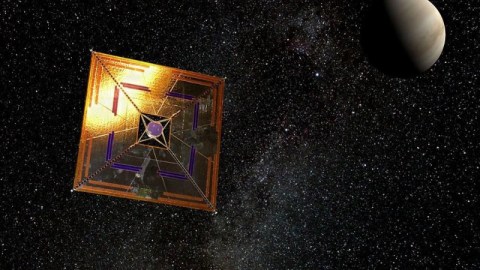
If emissions don’t go down, there’s still an option for combatting global warming. We just have to effectively dim the Sun.
Global climate change is one of the most pressing long-term issues facing humanity today. The science is abundantly clear on what’s happening and why: the Earth is getting warmer, human-caused emission of heat-trapping greenhouse gases is the reason, and the concentration of these gases only continues to rise, unabated, over time. While there are a great many calls to reduce emissions, capture carbon, and move away from fossil fuels, there’s little that’s effectively been done. The Earth continues to warm, sea levels continue to rise, and the global climate continues to change. Could we take a different approach, and partially block the light coming from the Sun? That’s Tony De La Dolce’s question, as he asks:
[W]hy don’t we evaluate building a “sun screen” in space to alter the amount of light (energy) earth receives? Everybody who did feel a total eclipse knows temperature goes down and light dims. So the idea is to build something that would stay between us and sun all year long…
This is one of the most ambitious, but also one of the sanest, options we could possibly consider when it comes to combatting global climate change.
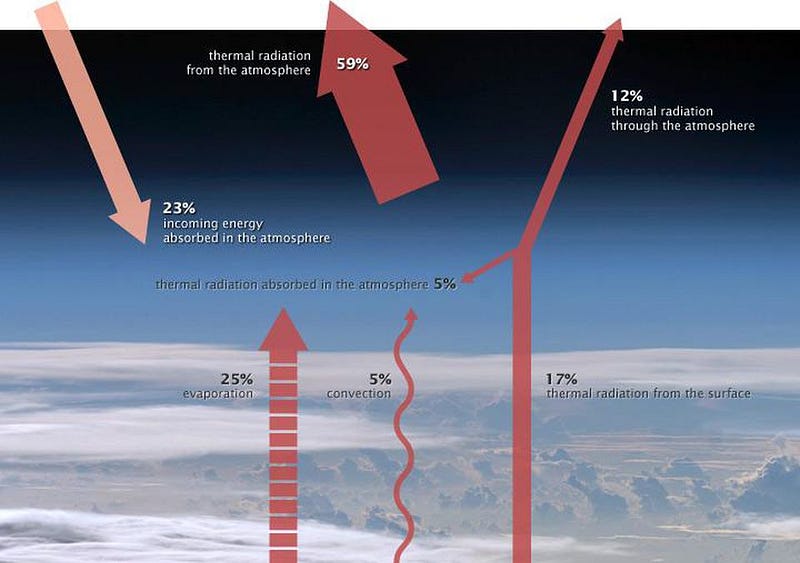
In general, it’s well-understood that increased concentrations of greenhouse gases in the atmosphere are driving global warming, which in turn is driving the Earth’s climate and weather patterns to change in a number of ways. Most (but not all) of these ways are generally recognized as bad for the majority of humans on this world, and so there is a global movement underway to combat these changes. If the most popular solution, to return Earth’s atmospheric gas concentrations to pre-industrial revolution levels, isn’t chosen, the only options left to humanity will be to either adapt to the changes, or to attempt geoengineering solutions.
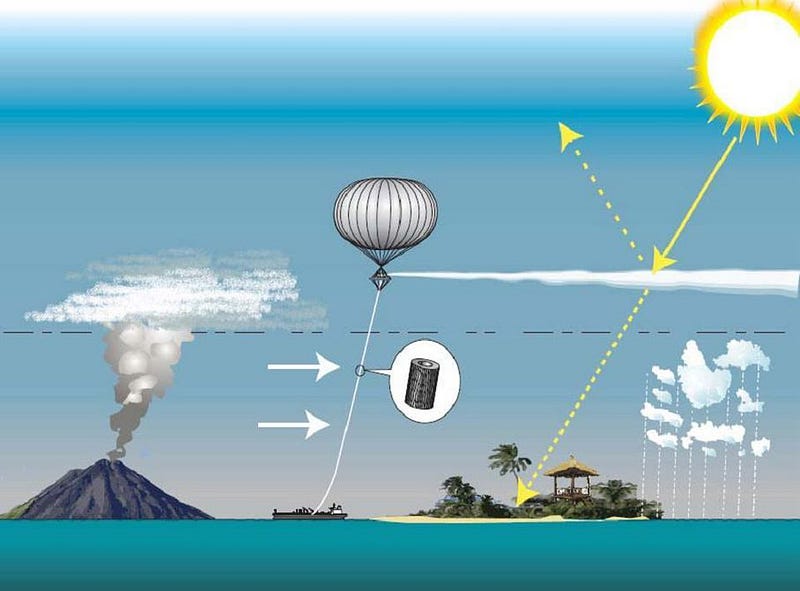
This final option, of geoengineering, is not without risk. Most of the solutions involve altering Earth’s surface or atmosphere further, with largely unknown, unpredictable consequences. Of all the geoengineering options, however, the least risky is the one put forth by Tony: to fly something in space, far from Earth, to simply block a portion of the Sun’s light. With less solar irradiance, the temperatures can be controlled, even if the atmospheric greenhouse gas concentrations continue to rise. If we wanted to completely counteract the effects of all the global warming that has happened since the industrial revolution, we’d have to block out approximately 2% of the Sun’s light on a continuous basis.
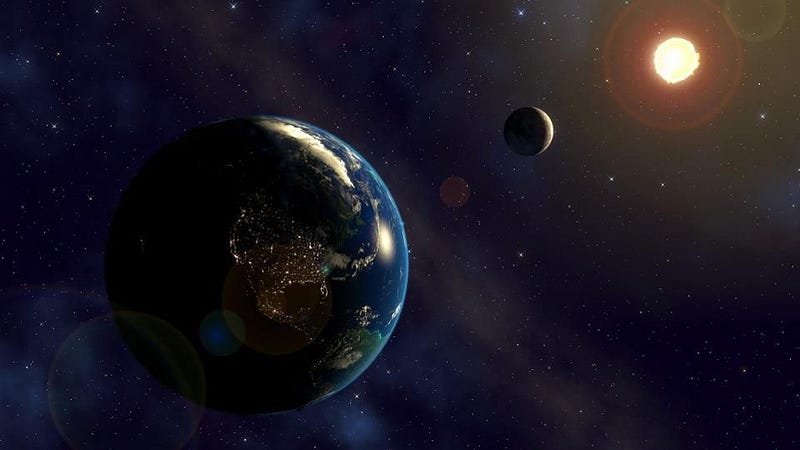
But this is easier, at least theoretically, than you might intuit. There’s a gravitationally quasi-stable point, in between the Earth and the Sun, which will always effectively dim the light from the Sun. Known as the L1 Lagrange point, it’s the ideal location for a satellite that you wish to remain directly between the Earth and the Sun. As the Earth orbits the Sun, an object at L1 will constantly remain in between the Earth and Sun, never straying at any point throughout the year. Its physical location is in interplanetary space: approximately 1,500,000 kilometers closer to the Sun than the Earth is.
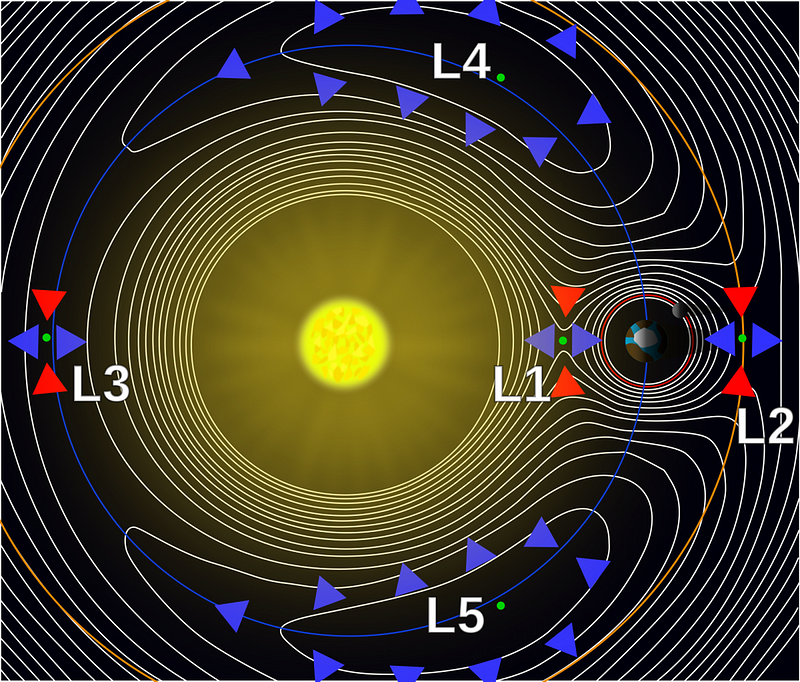
At that distance, even an Earth-sized object wouldn’t cast a shadow on our planet, as its shadow-cone would come to an end well before it reached our world. But a single shade, or a series of smaller shades, would effectively block enough light to reduce the amount of sunlight reaching the Earth. To achieve the reduction we’d want to counteract global warming, i.e., to reduce the received solar irradiance by 2%, we’d need to cover a surface area of 4.5 million square kilometers at the L1 Lagrange point. That’s the equivalent of an object that takes up half the surface area of the Moon. But unlike the Moon, we could divide that up into as many smaller components as necessary.
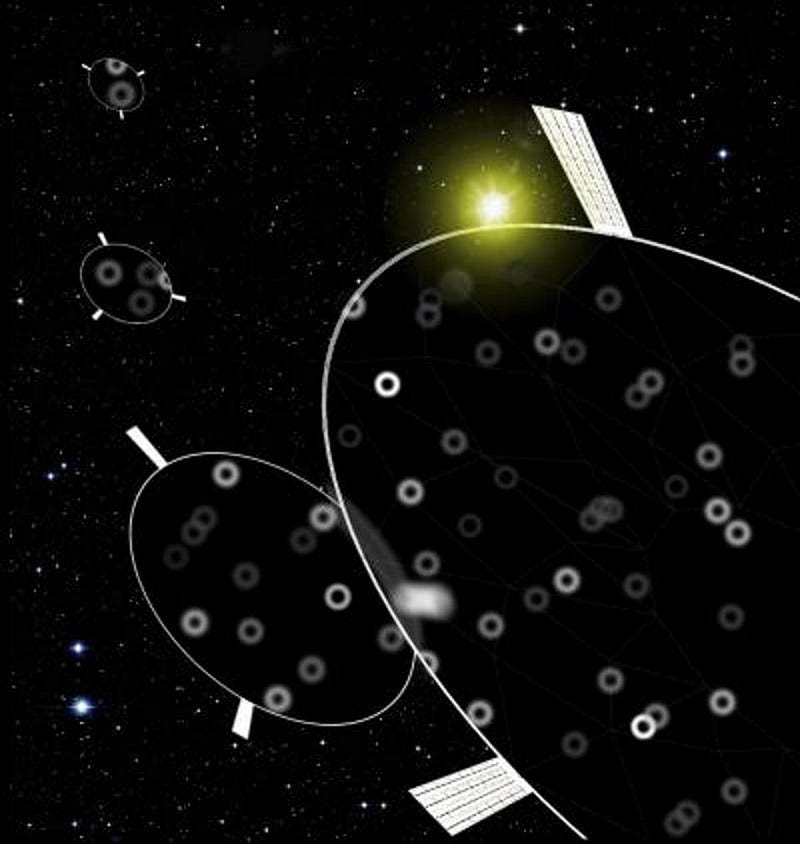
One proposal, put forth by University of Arizona astronomer Rogel Angel, propsed flying a constellation of small spacecrafts at the L1 Lagrange point. Instead of a large, heavy structure, an array of approximately 16 trillion structures, each one a thin circle about 30 centimeters (one foot) in radius, could block enough light to provide us with exactly the reduction of irradiance that we require. It wouldn’t create a shadow anywhere on Earth, but would rather reduce the total amount of sunlight striking the entire surface of our planet by an even amount, similar to an enormous array of tiny sunspots placed on the surface of the Sun.
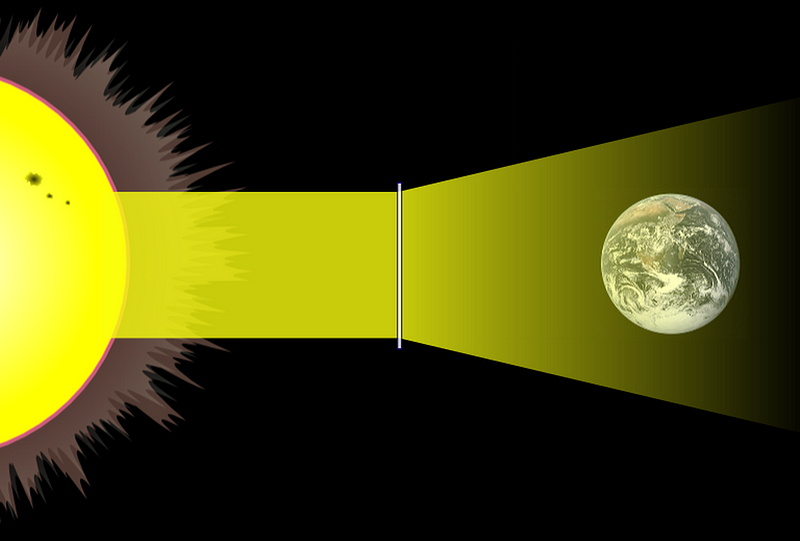
Another proposal, dating as far back as 1989, when James Early proposed it, would be to put a very large lens in space. A glass shield could be created to act as a lens, diffusing a large amount of sunlight away from the Earth. An enormous space lens, or a series of smaller space lenses, would only need to be a few millimeters thick to refract the sunlight where much of the light that would have been incident on Earth instead gets shunted into interplanetary space. At the L1 Lagrange point, the lens (or series of lenses) would have to cover right around a million square kilometers to reduce the solar energy reaching Earth by about 2%.
In principle, this sounds like an easy strategy, and potentially a low-risk, high-reward solution to our global warming problem. But there are two problems with it.
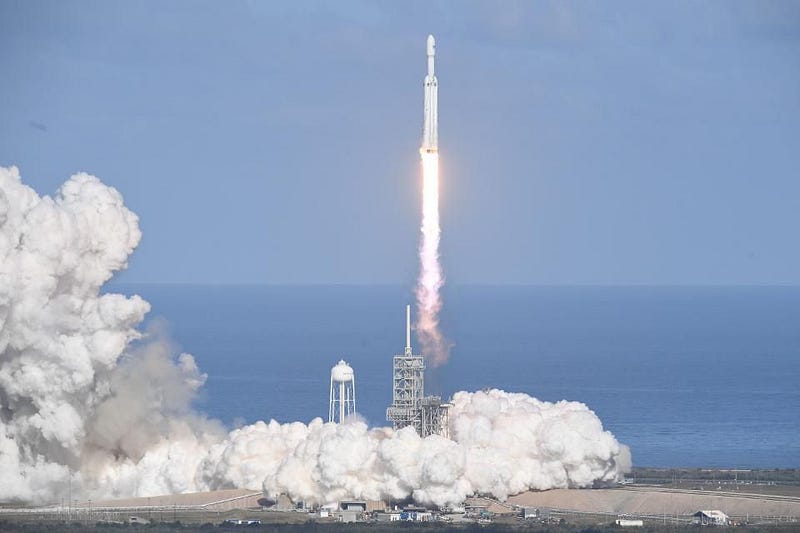
1.) Launch costs. To send any object to the L1 Lagrange point is well within the scope of what humanity’s spaceflight program is capable of. We’ve done it numerous times: it’s where the majority of our Sun-observing satellite missions go. But even for a series of very thin, very light spacecrafts, the launch costs would be tremendous. If Angel’s proposal of a transparent, thin film were flown, with each flyer only 1/5000th of an inch thick and weighing no more than a gram, the total mass required would still add up to 20 million metric tonnes. Even if next-generation launch technologies like the Falcon Heavy can get costs down to under $1000-per-pound (a factor of 10 improvement over what they presently are), we’re still looking at hundreds of billions of dollars to launch an array like this. And that’s not even getting to the second problem.
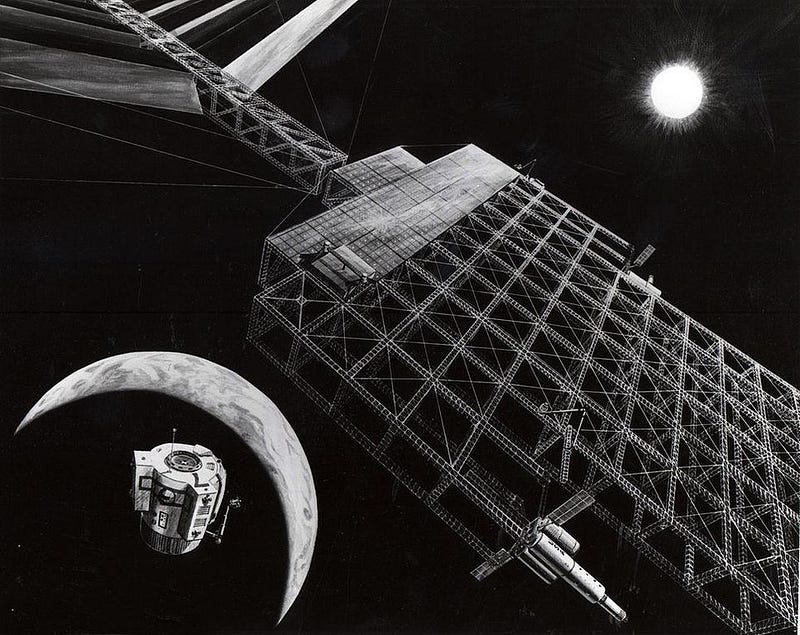
2.) Orbital stability. The L1 Lagrange point is only quasi-stable, meaning that either everything we launch there needs to be maintained (with rocket boosts) in order to remain in its current orbit, or it will eventually drift away, ceasing to block the sunlight from reaching Earth. This happens, unfortunately, way too quickly for our comfort: on the timescales of years-to-decades, depending on how well the initial orbital insertion works. This means, for the light-blocking approach, we’d need to have an ongoing cost hovering in the tens of billions of dollars per year just for maintenance launches alone: comparable to NASA’s entire annual budget. And that’s if the launch costs are lowered by the factor of 10 over what they are today.
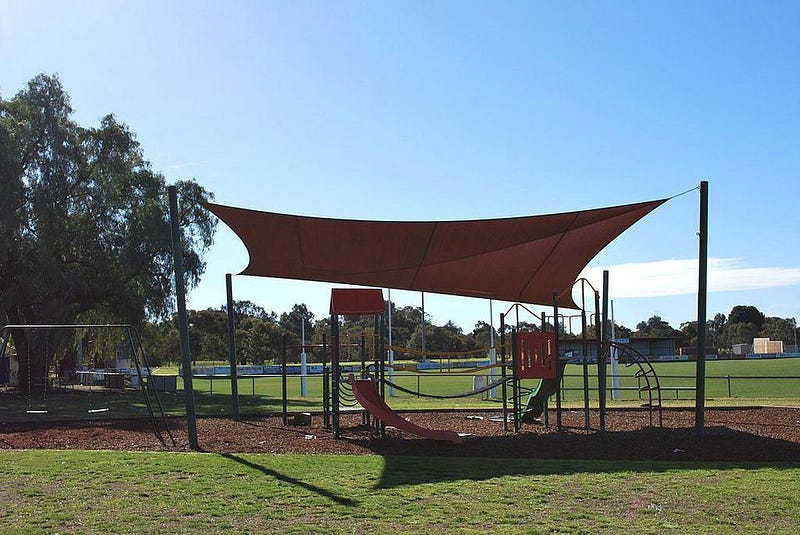
The big advantage of blocking the incoming sunlight from afar is that there’s no risk of long-term negative effects on planet Earth from geoengineering solutions. Other ideas, such as large-scale modification of the atmosphere, a constellation of satellites in low-Earth orbit, or the injection of cloud-forming materials or reflective particulates into the skies or oceans, have potentially hazardous unforeseen consequences. But the big problems of costs and long-term instability, right now, are the largest barriers to implementing such a solution.
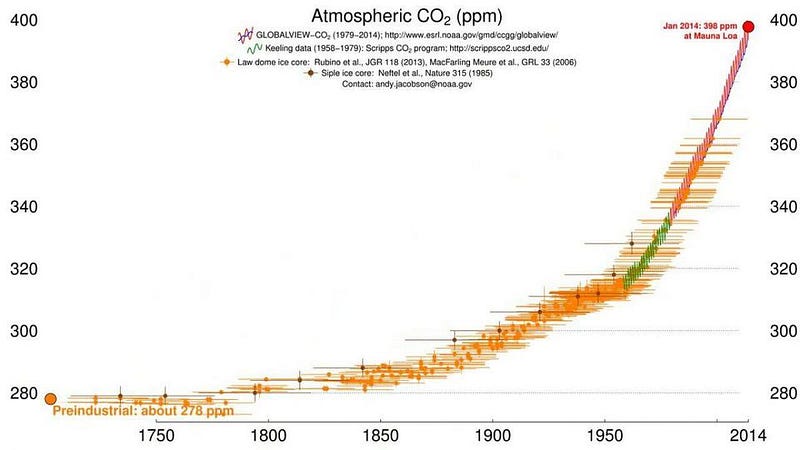
In the meantime, the planet continues to warm, CO2 levels continue to rise, and there are no effective strategies in place to change the course of events. Ideas for a screen like this, usually called a Space Sunshade, may become our best option. While the cost is prohibitively expensive, it may, in the long run, be the cheapest option we’re willing to implement. As the years, decades, centuries, and millennia tick by, our descendents will be dealing with the consequences of our actions or inactions today for generations to come.
Send in your Ask Ethan questions to startswithabang at gmail dot com!
Ethan Siegel is the author of Beyond the Galaxy and Treknology. You can pre-order his third book, currently in development: the Encyclopaedia Cosmologica.




